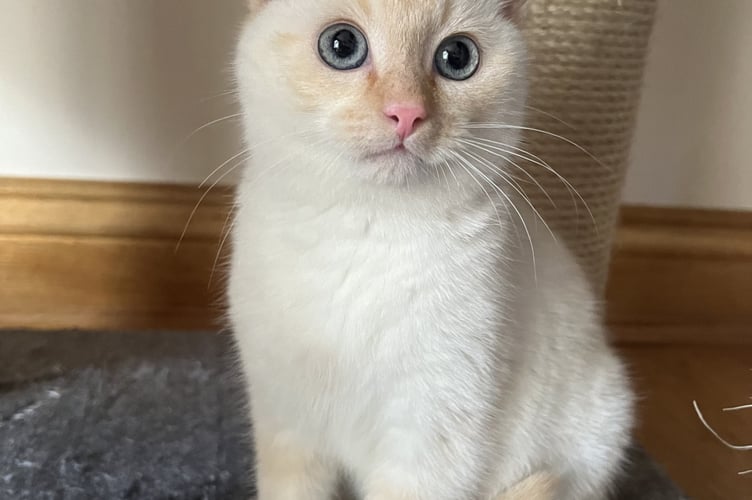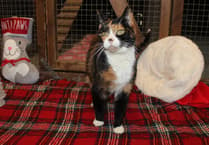Meet Red Bull – he’s a type of Siamese cat called a ‘flame point’, and he came into our cattery recently as a feral kitten who was hunting around for scraps of food at a supermarket.
His colouring is quite rare, with most Siamese cats being classed as ‘seal point’ which means that some, or all, of their faces, ears, feet and tails are a black or dark brown colour.
Other Siamese point colours include chocolate, red, blue and lilac; and the colour of a Siamese’s body can also vary from pure white, to ivory, through to a creamy colour with dark spotting. All Siamese cats are born with white bodies, and any darkening will occur over time.
Head shape also varies – Red Bull has an ‘applehead’ whereas most Siamese cats have elongated faces, and some have wedge-shaped ones. All Siamese cats have blue eyes (not so much a colour as a genetic lack of pigment), and a common trait is for them to be cross-eyed.
Another characteristic common to the breed is that the Siamese is usually very vocal, with a big personality to match.
Red Bull will need lots of socialisation before he’s happy being a family cat, but it’s in his genes to be very affectionate and playful with humans and other pets.
Because they are so friendly, intelligent and sociable, Siamese cats should not be left on their own for too long, and they need lots of stimulation.
In fact, they are very similar to dogs, and will often play at fetching a ball and will walk happily on a harness and lead.
Another, more extreme, tendency is the Siamese’s ability to bond with a single person and to be incredibly loyal.
They show their allegiance with a distinctive meow that has been compared to the cry of a human baby – persistent and demanding!
The Siamese’s good looks and outgoing personality make it a cat that never goes out of fashion, and it is has undergone a lot of selective breeding over the years.
The breed can also claim to have aristocratic origins: originally bred in ancient Siam (now Thailand), Siamese cats were considered sacred and only members of the royal family and Buddhist monks were allowed to keep them.
The breed was first described in the ancient Tamra Maew manuscripts, also known as ‘The Cat-book Poems’, the earliest of which date back to 1351.
The cats are described as being as rare as gold, and anyone who owns one will become wealthy. When European dignitaries began visiting Siam in the 1800s they were presented with Siamese cats as goodwill gifts.
When some of these cats came to Europe with their new owners they quickly gained in popularity because of their unique appearance and distinct personality.
In 1884 the British Consulate General brought back a breeding pair of Siamese cats (Pho and Mia) to his sister, Lilian Jane Gould, who co-founded Britain’s Siamese cat club in 1901. Most British Siamese cats can be traced back to only 11 original imports, and the breed was recognised by the Cat Fanciers’ Association in 1906 – making it one of the oldest pedigree cat breeds.
The Siamese’s uniqueness, and its very different appearance from most domestic breeds of cat and ‘moggies’, was not universally welcomed when they were introduced to the west, and some were described as ‘an unnatural nightmare of a cat’. But by the 1950s and 60s, the Siamese had gained in popularity worldwide and it can now claim to be one of the most popular breeds of cat. We’re confident that Red Bull won’t be with us for long, and that a loving new home is just around the corner.




